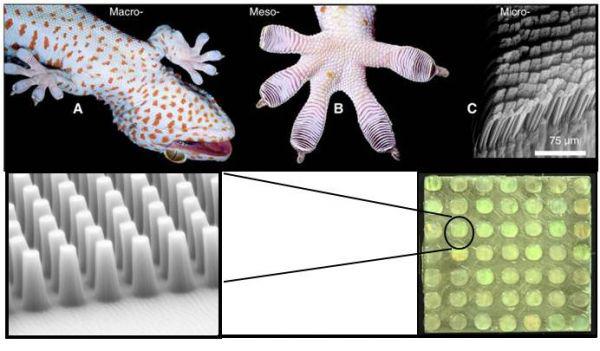Gecko-Inspired DARPA Technology Helps Humans Scale Walls
The U.S. Navy already has its frogmen, so why not add a reptile to the military’s repertoire? Mimicking the biological properties that let geckos amazingly climb and cling to a number of surfaces, scientists and engineers at the Defense Advanced Research Projects Agency (DARPA) devised “Geckskin,” gecko-inspired paddles that recently helped a 218-pound man—lugging a 50-pound load—scale and descend a 25-foot glass wall.
DARPA’S Z-Man program works to develop biologically inspired climbing aids to help warfighters scale vertical walls made of typical building materials in tight urban environments while carrying a full combat load and without the use of ropes or ladders. Geckos, spiders and small animals inspire them.
“The gecko is one of the champion climbers in the animal kingdom, so it was natural for DARPA to look to it for inspiration in overcoming some of the maneuver challenges that U.S. forces face in urban environments,” Matt Goodman, program manager, says. “The challenge to our performer team was to understand the biology and physics in play when geckos climb and then reverse engineer those dynamics into an artificial systems for use by humans.”
Draper Laboratory of Cambridge, Massachusetts, developed for DARPA the polymer microstructure Geckskin, a synthetically fabricated, reversible adhesive, stiff fabric impregnated with an elastomer that “drapes” over a surface, letting the wearer climb. An engineers’ test revealed that a 16-square-inch sheet of Geckskin stuck to a vertical glass wall could support a static load of up to 660 pounds.
“Historically, gaining the high ground has always been an operational advantage for warfighters, but the climbing instruments on which they’re frequently forced to rely—tools such as ropes and ladders—have not advanced significantly for millennia,” reads a portion of DARPA’s statement announcing the endeavor dubbed Z-Man. “Not only can the use of such tools be overt and labor intensive, they also allow for sequential climbing whereby the first climber often takes on the highest risk.”
Here’s a fun fact: Geckos can climb a vast array of surfaces using adhesive pressure of 15 to 30 pounds per square inch for each limb—meaning a gecko can hang its entire body by one toe. They can climb because of a physical chemistry phenomenon called the van der Waals force, which is the sum of the attractive or repulsive forces between molecules. Basically, positive sides of one molecule attract the negative sides of another, drawing them together and creating a temporary polarity between the molecules in geckos’ feet and molecules in the surface they are climbing.
Engineers working on the Z-Man project had to account for the fact that humans carry much more weight than geckos and created climbing paddles “capable of balancing sufficient adhesive forces in both the shear (parallel to the vertical surface) and normal (perpendicular to the vertical surface) directions,” a DARPA news release states.






Comments